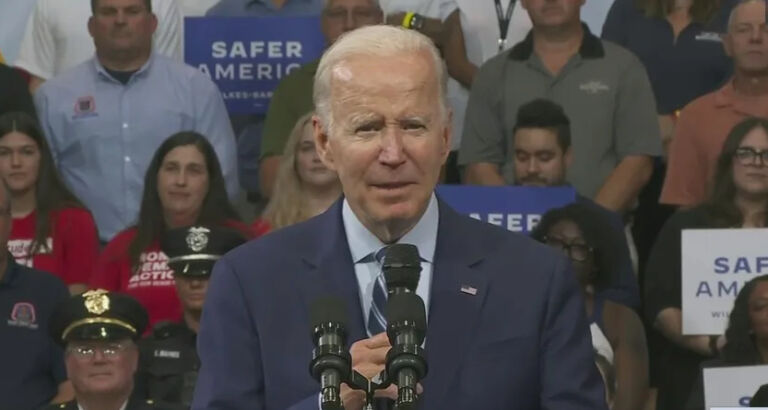There are two fundamentally different conceptions of civil society. One sees people acting with their families and neighbors to help one another. Civil society is voluntary cooperation with regard to the law, though people may sometimes feel morally compelled to help build their communities or assist someone in need. In this view, civil society emerges organically from human nature, rearing children and living in proximity to one another.
While markets and governments can emerge from the natural communities, they are separate spheres. In expressing this emergent phenomenon, Catholics speak of subsidiarity, Calvinists of sphere sovereignty, and conservatives follow Edmund Burke in speaking of our “little platoons” that provide a pattern for loyalty to larger groups.
A contrasting view sees civil society instrumentally as grassroots power that must be organized at with advocacy strategies to win elections, changes in public policy, or restraints on business. Former Gov. Jim Hunt said in a 2012 video for the Democratic National Convention in Charlotte, “Government is the only thing we all belong to. We have different churches, different clubs, but we’re together as a part of our city, or our county, or our state and our nation.” Hunt’s summary of this view conflates government definitions of place with behavioral and attitudinal boundaries of community.
The Triangle and Triad have no official boundaries, and neighbors in Alamance County may have more allegiance to one area over the other. Charlotte encompasses many places in South Carolina, while counties in northeast North Carolina are part of Virginia Beach. Within Charlotte, Myers Park is as different from Chantilly as either is from University City. Government defined statistical areas will often change based on the composition and characteristics of the place. Municipal annexation has followed the desires of residents as well as the ambitions of politicians.
If you start from the presumption that a place is defined by its government instead of its people, you define the society by its relationship to government. The Realizing Democracy project, financed by the Ford Foundation and George Soros’ Open Society Foundations, starts from this fundamental misattribution. Its goal is “reimagining the relationship among civil society, government and the economy—asking what it would take to realize the full promise of democracy in the United States” along a “more inclusive path, one grounded in people-centered democracy and the nation’s most deeply shared values.”
The most deeply shared value among authors of a series of articles in a “Realizing Democracy” supplement to the Stanford Social Innovation Review is power. Even the essays about civil society are warped by the emphasis on power. In his introductory essay, Demos President K. Sabeel Rahman makes clear that civil society is not about families or neighbors. “We can create new forms of inclusive, multiracial, bottom-up civic power,” he claims.
But achieving this kind of civic power requires an infrastructure that surpasses flash-in-the-pan moments of mobilization, protest, and voting, and instead channels participation through durable organizations that can deepen the efficacy and power of communities. We need advocacy strategies that can build durable grassroots power that outlasts any one election or campaign. This aspiration, in turn, raises important questions both for the practice of organizing and the civic engagement sphere—including how we resource and support grassroots groups.
Marshall Ganz and Art Reyes, III, in an essay titled “Reclaiming Civil Society” comment that “unions, churches, fraternal organizations, social movements, and other associations” have atrophied and “left Americans with a diminished capacity for self-government, transforming them from active citizens into political customers or nonprofit clients.” Although they blame professionalization of politics and expansion of nonprofits for the decline of membership associations (others would instead blame government overreach and the professionalization of assistance), their lament for the retreat of civil society would resonate with conservatives and libertarians.
Unfortunately, they make political victories and public policy change the primary outcome for civil society to seek:
Within the context of a democratic state, civil society is a vital source of autonomous power-dependent neither on government nor on private wealth—but it is capable of influencing both. This requires turning individual resources into collective power, often through the mechanism of government.
Civil society, in their, view must fight against a Republican Party that “transformed itself by embracing racist, misogynistic, xenophobic reaction to the civil rights movements” and side with progressives who “have struggled with how to respond effectively to this challenge, their efforts complicated by the capacious racial, gender, class, and generational diversity inherent in their vision.” With this starting point, it should not surprise that Ganz and Reyes’ examples of effective civil society include a campaign aimed at a local sheriff, local legislation, and “an independent voter organizing project…[that] ultimately elected a progressive woman as a county commissioner in a conservative rural county.”
Other essays in the series also emphasize making systemic changes through coordinated action aimed at wresting power over governments or corporations and transferring it to favored groups. This is a cramped and dystopian vision of civil society, not quite a Hobbesian war of all against all but an existential war that is neither as inclusive nor as inspiring as the funders may think.
Governments are natural and necessary to maintain order, but there is more to life than power. Markets are natural and necessary to deal with scarcity, but there is more to life than money. Civil society is where everything else takes place. It does not exist to rein in corporate executives or government bureaucrats. It begins with the family and flows out from there in relationships that are neither transactional nor legally compulsory. Our democracy is not perfect, but it is hard to see how the program of “changing institutions themselves in fundamental ways in addition to changing the people within those institutions” proposed in Realizing Democracy would do anything but reinforce divisions and weaken civil society.
If our task is to revive civil society, it is more likely to be done by restraining government, renouncing ill-gotten gains, and reconnecting with our neighbors.


